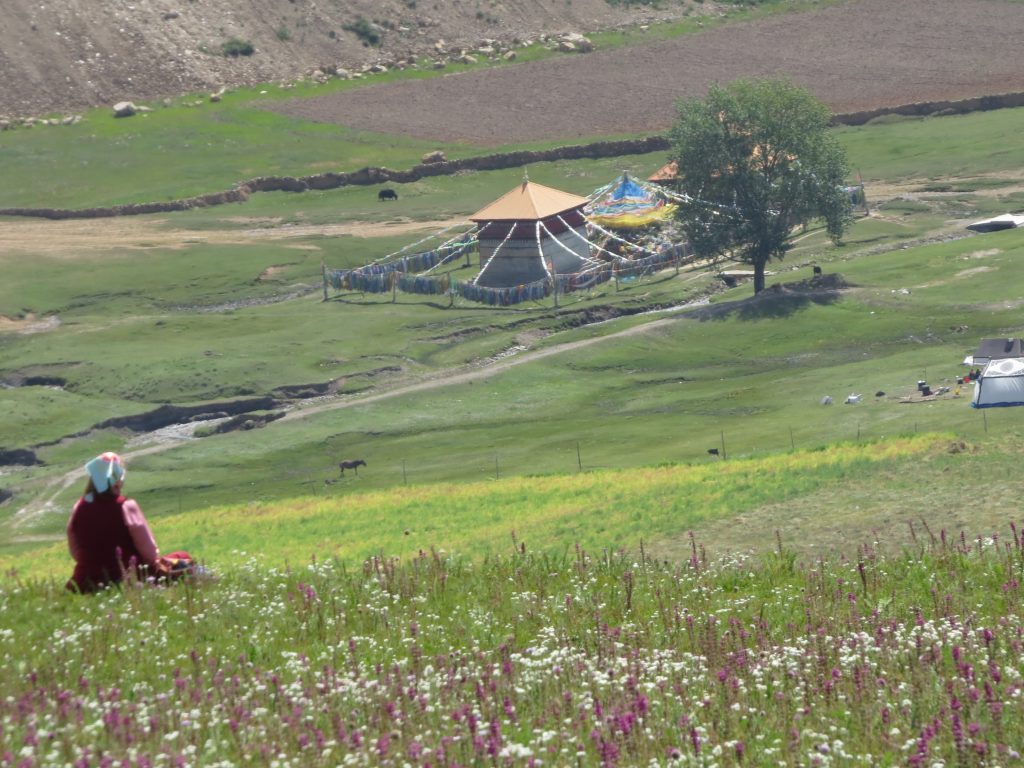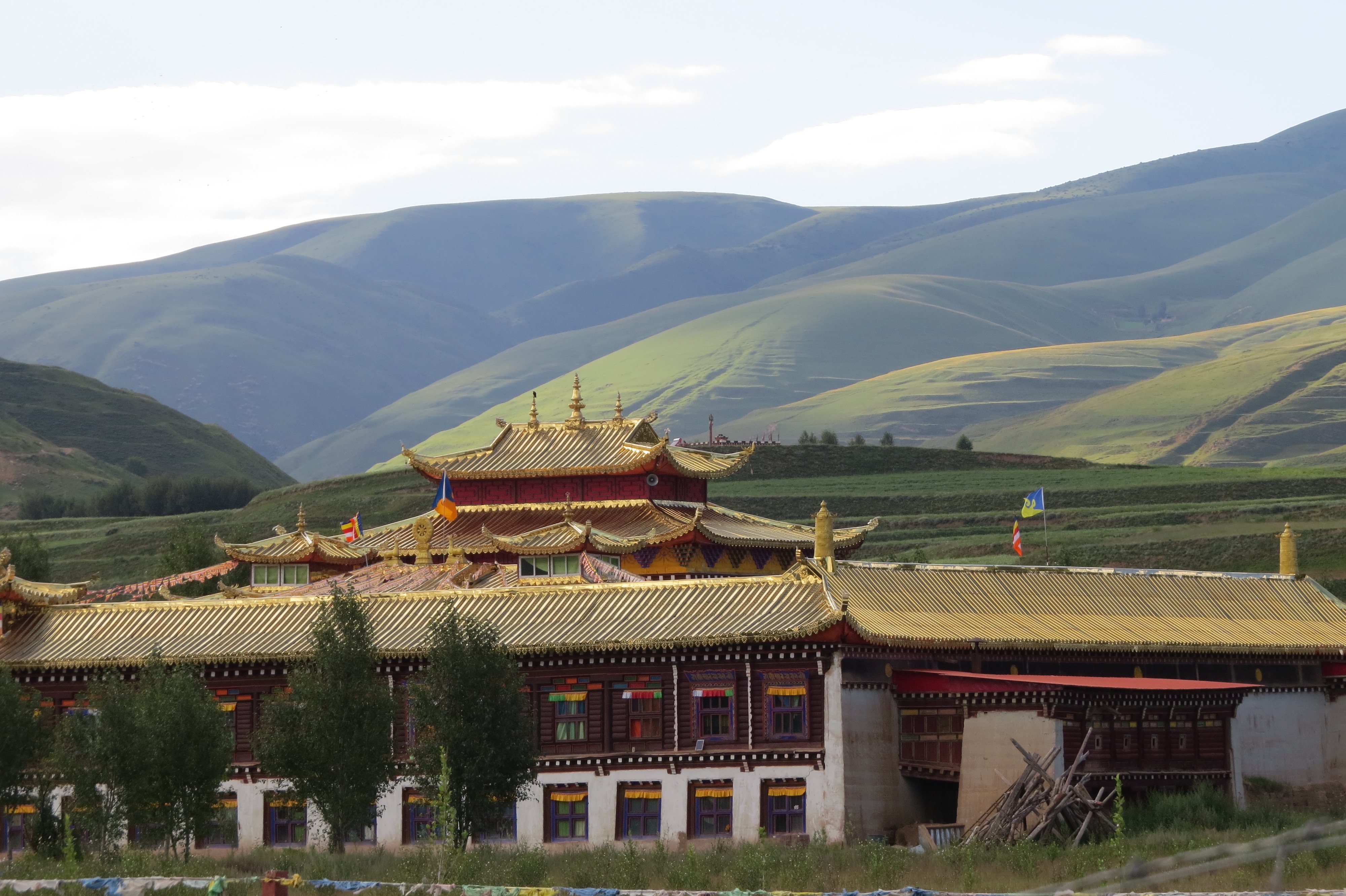
In the summer of 2016, I traveled to Trehor, Dokhams (Eastern Tibet). The Yalong valley opens like a blossom as you descend around the curving hill down from Kandze (དཀར་མཛས) and enter the tunnel of tall dappling leaved trees, like an impressionist painting, that mark its entrance. On both sides the fields of barley spread out, high and waving in the gentle wind, their heavy tops gleaming green – but they will be golden waves or stacked bundles by the time we leave this sweet land in a couple of months. Grazing freely on the hills and fields the chestnut coats of the Khampa horses shimmer in this same clear radiance of the sun, and the tinkling of their bells play in the soothing quiet of the generous wide open spaces.
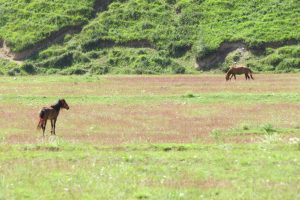
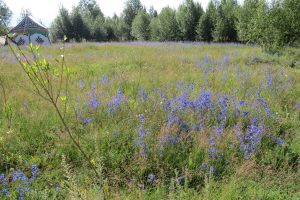
The cars stop to prepare for Rinpoche’s approach to the monastery, the monks jump out and throw softly waving piles of various colored khatas over their shoulders and swiftly and gracefully tie them from the front of the car around the mirrors, the ends draping over the doors. Then, as the cavalcade slowly approaches the monastery, for miles along the route there are the brightly decorated horses, motorcycles, acars, and as far as the eyes can see people line the roads with bunches of wildflowers and khatas, children tied to their backs or running in and out of their feet. The air is fragrant with the clouds of sang, the burning juniper and herbs that raise in clouds of fragrant smoke from small fire pits all along the road and on the rooftops of the houses.
Entering Khams
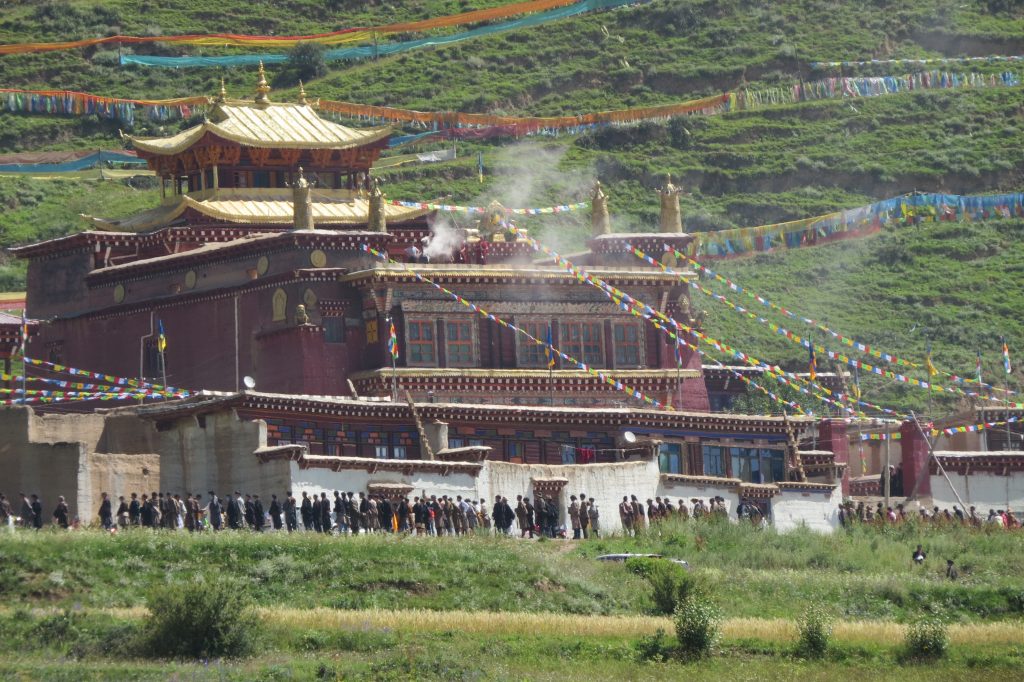
I always wait in anticipation as we climb up the sacred mountain pass on the outskirts of Darsedo (དར་རྩེ་མདོ) to the rock cairn, that for the Tibetans marks the entrance to the eastern Tibetan nomadic land of Khams. This ancient frontier town was the centre for tea trade between Tibet and China, formerly the capital of the Chakla Kingdom. As we near, shouts of ki ki so so and hla gyalo echoing in the otherwise quiet air and which is also is filled with thousands of colored paper wind flags like a colorful rain, flying and twirling everywhere a scattered offering by the travellers who pull their cars over and jump out to joyfully praise and honor the mountain gods of the pass. The Khampa men with their long hair decorated with red threads, dressed in fur-lined chuba and long-sleeved white shirts with one shoulder nonchalantly swinging free, and with their bright boots firmly planted, as they let fly the piles of tiny paper prayer flags. The women in their black chuba, colorful aprons and blouses and worn or youthful faces with the ruddy cheeks of this high altitude, like a mark of the Khampa highland heritage.
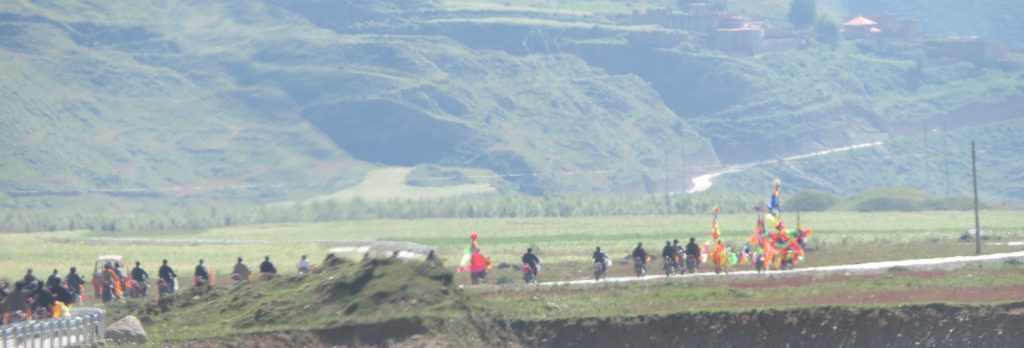
Just as quickly they reload themselves back into their trucks and jeeps, cars and motorcycles and resume their journey at breakneck speed along the road that curves and climbs up and down the mountain passes, following the course of the Yalong, dza chu, Nya chu and Tsang po rivers strewn with massive boulders, with its torrents of thick, fast-flowing muddy waters which clear into falls and pools and jewel-like stretches at the higher altitudes.
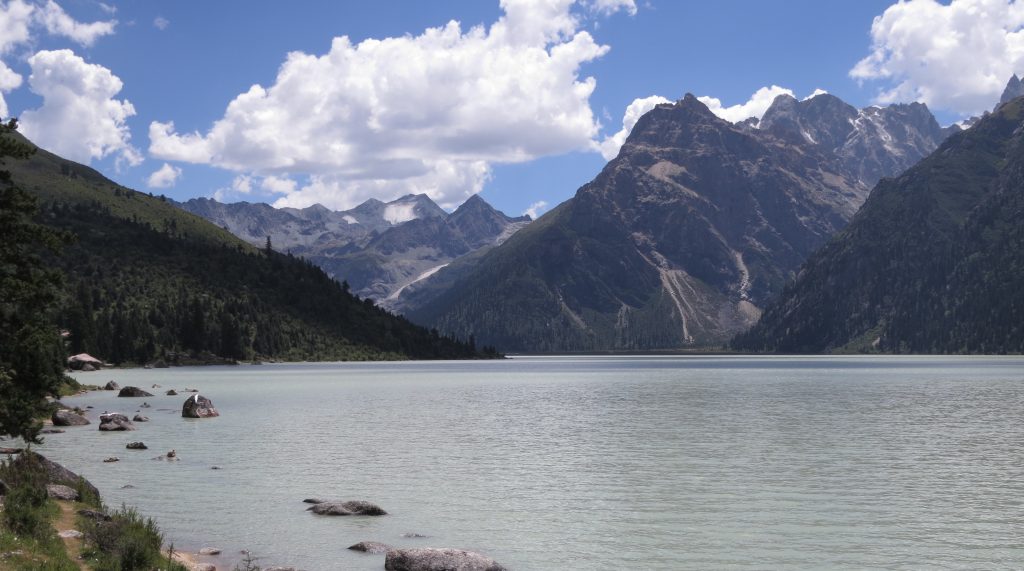
Tibet is about land and water air and space in its enormity, its majesty its overwhelming beauty and magnificence, which is effortlessly healing comforting and enriching to the body and mind.
Kitchen warmth
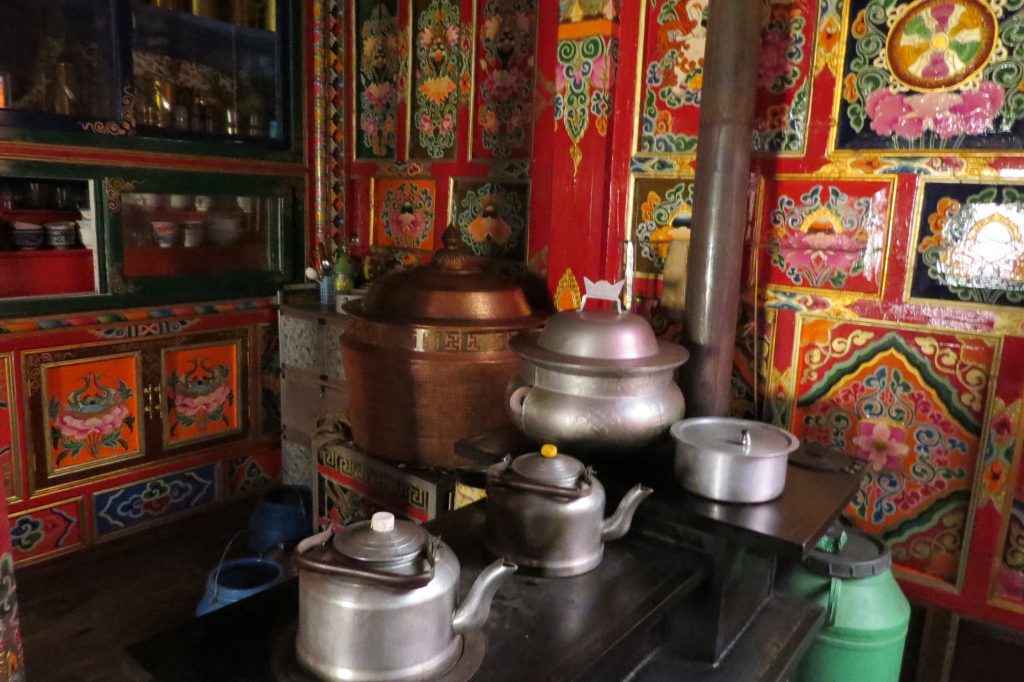
Kitchen in a home in Rampatsa
The trip to Tibet is long and arduous, and over these many trips to Tibet, I have found I have developed my wits and ways of adapting to this fierce world. In the monastery, the food, tiresome, over-fried and boiled vegetables and tasteless white rice which the kind, bow-legged, cook Karma carefully prepares for the “foreigners”, Rinpoche’s guests, I discovered one gloomy cold morning, can be avoided by taking refuge in the warm cozy kitchen, where one finds the dzo yogurt from the nunnery and the leather bag of tsampa from the cook’s family, hanging on a post by the kitchen stove and in the decorated wooden bowl, dried cheese, and sugar. This is where the monks gather and laugh and chat, as they make their morning tsampa balls and slurp the heavy nourishing butter tea, in the kitchen by the long black metal stove filled with fragrant wood, that snaps and spreads out its waves of welcome heat.
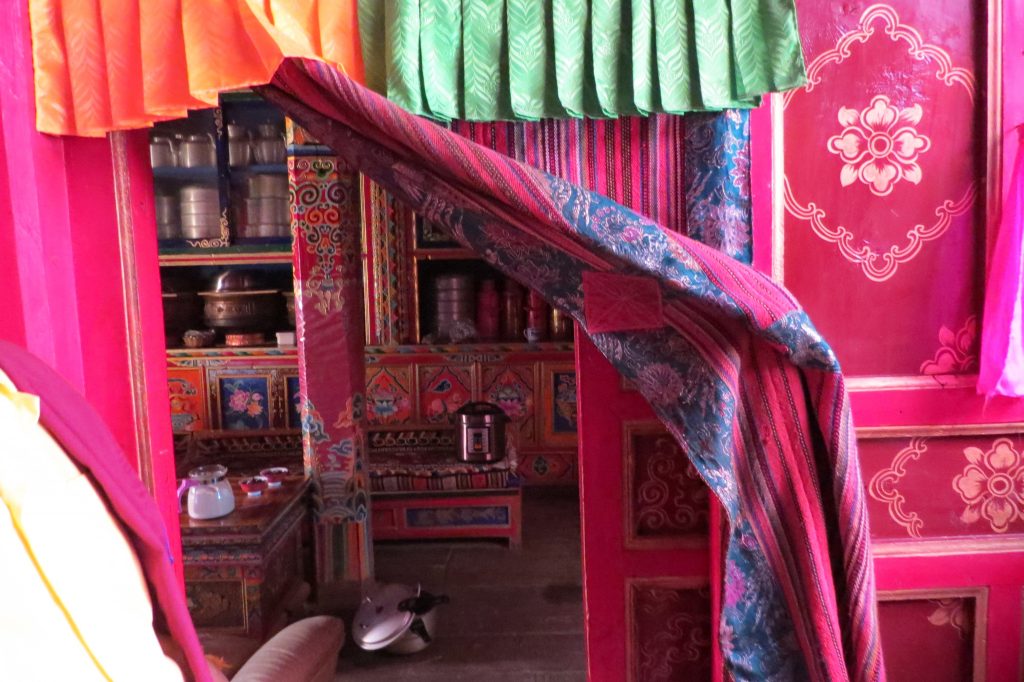
Entry to the kitchen
The beginning
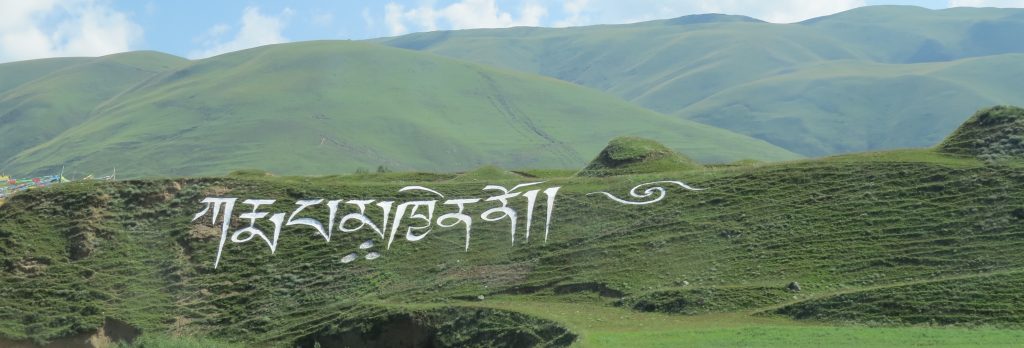
The journey begins at the jumping off point for the journey to Khams, the hot, lush city of Chengdu. The road moves up to the higher altitudes through the switchback roads carved into the sides of the steep mountains, and the vegetation gradually changes from forests of bamboo and crowded houses made of stone, to the open fields and high mountain forests and the beautiful Tibetan-style houses of wood, brightly painted. The lower floor housing the animals and the upper floors accessible by steep stairways cut into the side of a single massive log.
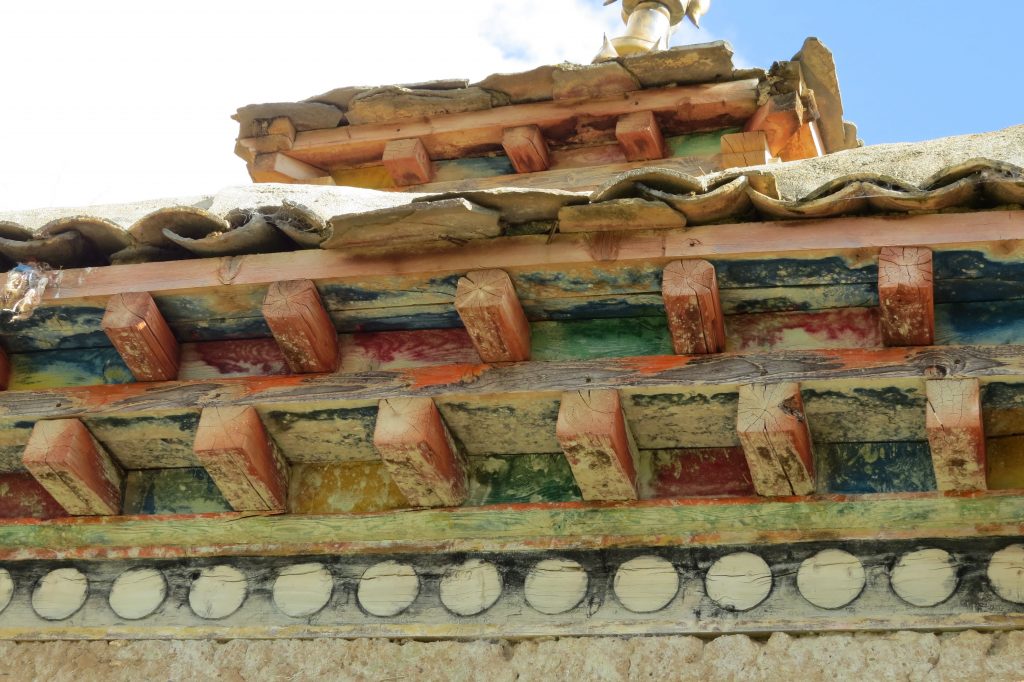
As I was looking out the window of the car, I was waiting for these usual signs, however the landscape instead became dotted and the black woven yak-thread tents of the nomads and the houses were in a style I had never seen before. Herds of yaks and sheep filled the mountain sides and the people were dressed in an unfamiliar style. However everywhere were the customary lovely Buddhist white stupas pinning the land and the rocks were painted with Buddhas and other deities and the familiar OM MANI PEDME HUNG and other mantras were carved in rock and written on the mountain sides blending the familiar with the new.
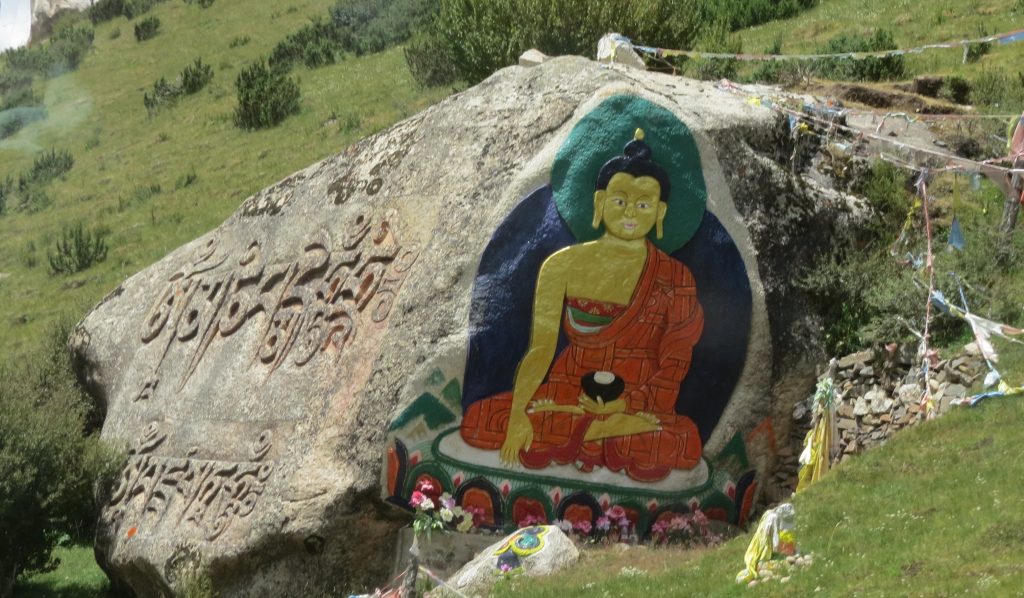
There is the constant sense in Tibet that the land is alive. It can be read as a sacred manuscript punctuated with the great white Buddhist stupas and illustrated with the painted rocks and caves high in the upper reaches of the mountains sides. Triangles and circular structures made of prayer flags mark the abodes of the local gods who inhabit the mountains and lakes.
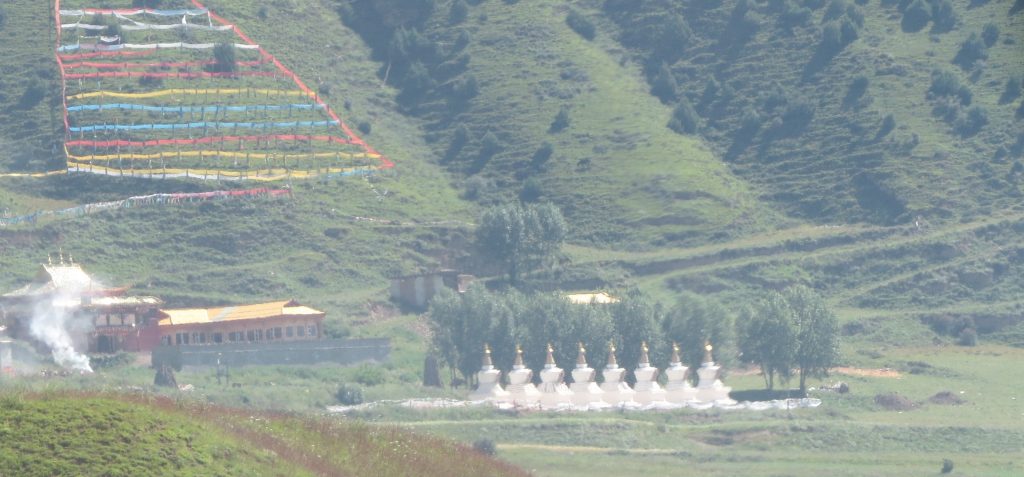
Several hours into this unfamiliar landscape, it dawned on me that we were not going by the usual road straight to Tehor in lower Khams, Kalu Rinpoche’s valley, Tre-sho Gangi Rawa, but somewhere else entirely. Many hours later, as the sun was beginning to set we turned along a dusty narrow road surrounded by flower filled trees and arrived at a newly built Tibetan style mountain lodge. Everyone was remarking that the land was like Sikkim, lush and abundant. Stiff and weary, we climbed out only to find we had arrived at our destination in Amdo!
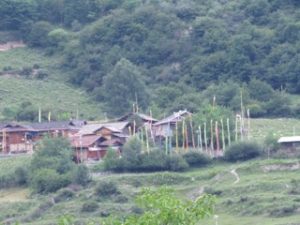
This mountain lodge had the rooms for guests below, large hand carved wooden beds and wash bowl made of hand-pounded copper and above a huge open room with brightly colored cushioned seating along the walls and glass cases with handcrafted kitchenware and the classical Tibetan black iron wood stove with steaming pots of butter tea, large rounds of flat bread and golden honey and through the windows looking over the balcony the vista of green hills and valleys spread out.
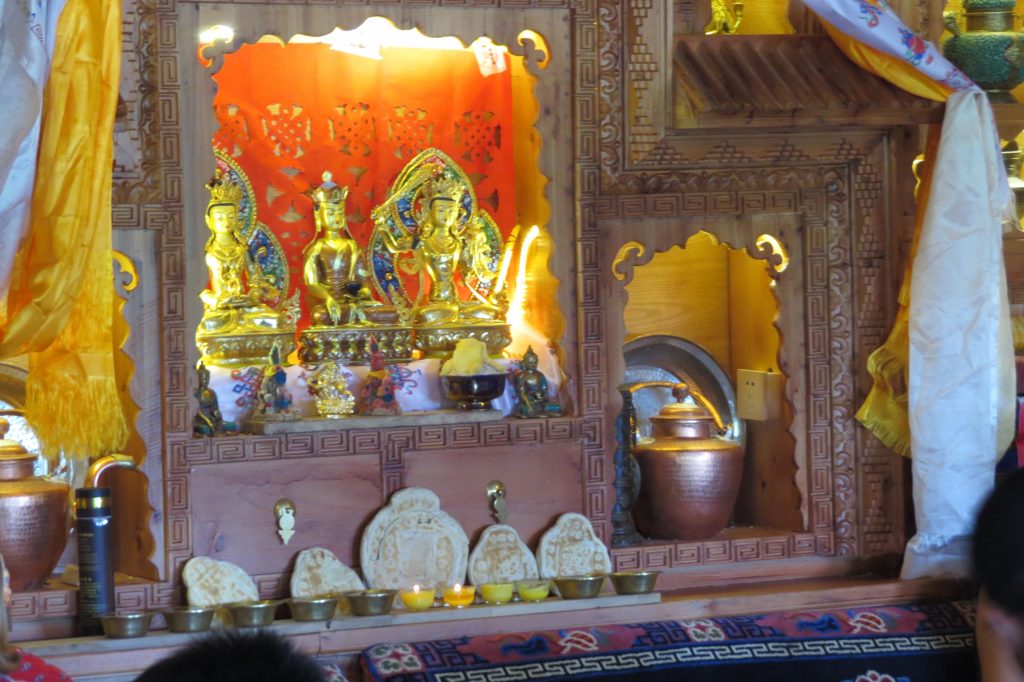
After a few days of exploring this terrain, we climbed into the cars again and made the grueling 12-hour drive over the passes and along the rivers, past the small villages along the road finally to the familiar valley, the village of Rangpatsa and Kalu Rinpoche’s monastery complexes. Deciding to stop in the middle of the night, the party had split up into several different hotels as there wasn’t enough room for all of us in one, so exhausted and hungry we fell into a few hours sleep before we began the journey again as the sun rose and burned off the morning mist and warmed the chill air.
Arriving at Trehor Begun Kagyu Monastery
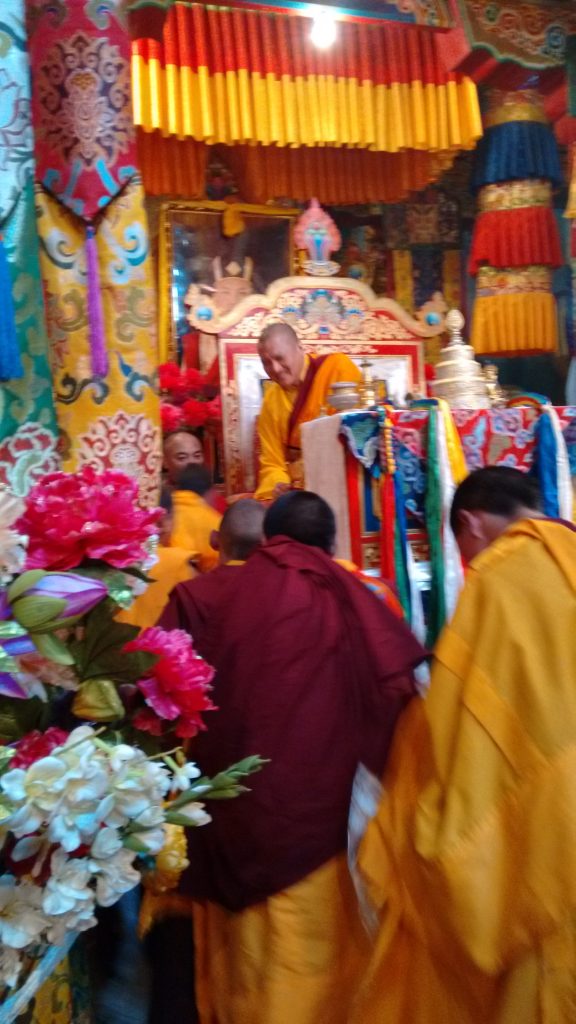
Arriving at the main monastery, Kyabje Kalu Rinpoche’s seat, the car passes the lines of monks and lay people and the children dressed in their finest holding bunches of wild flowers as we pass through the high thick-walled houses of the monks, like fortresses and surprisingly pass by the main temple and continue along past the open fields of slender clusters of trees and high purple wildflowers in full bloom and stop by the entrance to the monastic college. Amid the mellow sounds of the gyaling (a clarinet type musical instrument), cymbals, conch shells and long trumpets, Rinpoche descends from his car and under the wind waving yellow traditional umbrella passes through the courtyard and into the central temple. The monks kick and slip off their shoes and the lay crowd pushes and shoves their way into the temple and I am popped through the door by the crowd and find my way up beside the throne to get a good view of the ceremony. The chanting begins and the traditional offering of the mandala and the auspicious offerings of body, speech and mind are made amid chanting and chatter and the sounds of drums, gyalings, radung (long horns) and the tinkling of the ritual bells. The assembly them passes by the throne for blessing (a text touched to the head) and offering of the scarf.
Study and Ritual
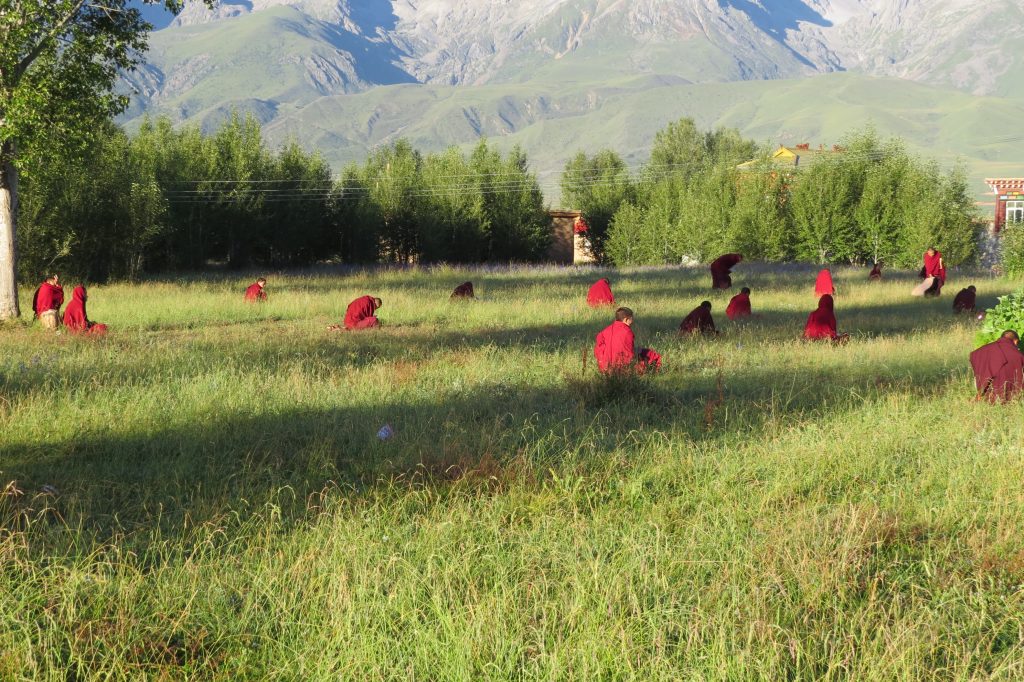
Life in the monasteries and retreat centre focuses on ritual and study which fills the days of the monks. As we leave the courtyard one morning after breakfast, the field just outside the monastery walls is dotted with the forms of monks sitting in the tall grass and flowers, memorizing, reciting and preparing for debate. The sound of their voices reciting softly reverberates in the clear, early morning light slanting across the field.
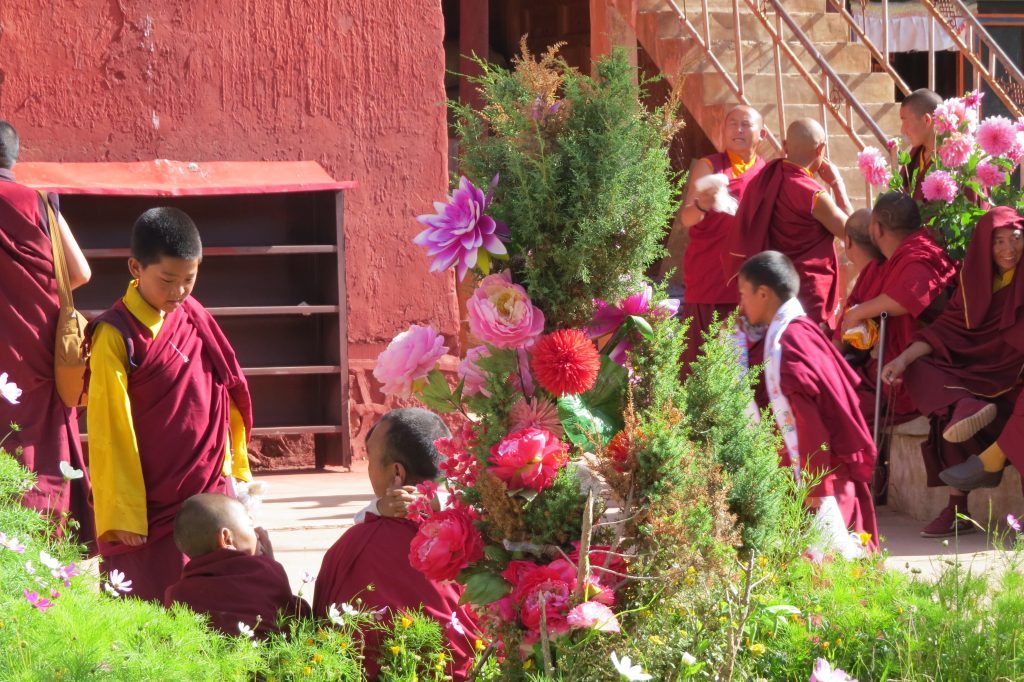
Much of the time during Rinpoche’s weeks in the monasteries, nunnery and retreat centre is composed of special ritual ceremonies. One two occasions, Nyunye, the two-day fasting ritual to the thousand-armed Chenrezi draws the villagers to the monastery and nunnery where they bring their children and come with bedding rolled under their arms and camp out overnight in the large open room in the temple main floor as the ritual begins at 5 am with the sojong vows that must be taken before sunrise and then the day is composed of four sessions of chanting, prostrating and recitation of mantra. The second day, in the early morning, the five vows are taken and the entire assembly is quiet, on this day there is no talking, eating, drinking and a solemnity descends upon the sangha.
Visiting the retreat centre
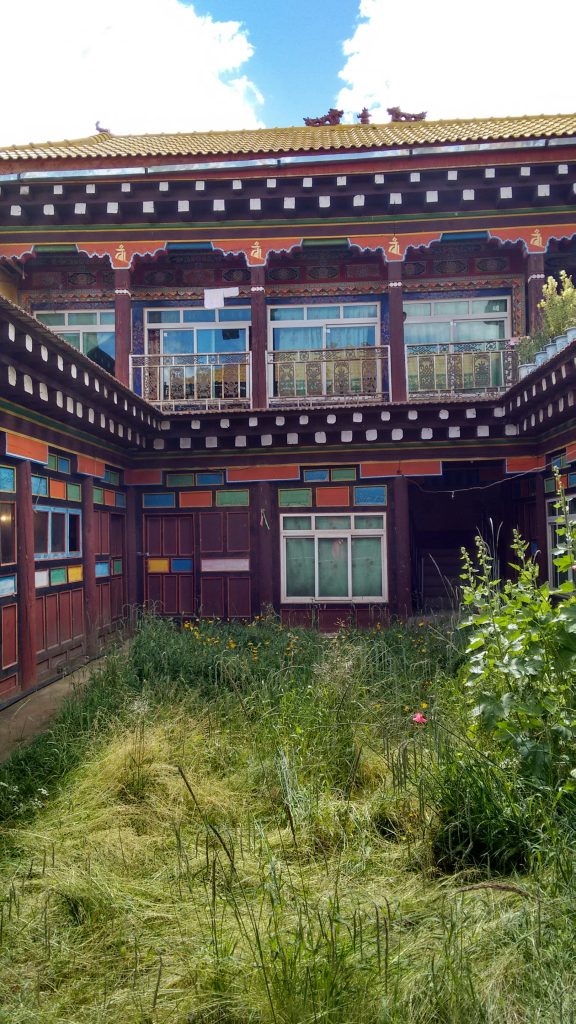
As we are eating our breakfast in the anti-room to Rinpoche’s apartment, one morning, the monks begin packing bags and organizing packages and out comes Rinpoche’s bag and umbrella, whispers pass through the room. One of the monks quietly lets us know to get ready as we will shortly be leaving for the retreat centre, high up on the mountainside where the monks have now completed their first year of the three-year retreat program. Rinpoche will spend the afternoon conferring empowerments and teaching the next set of practices to the retreatants. We have been invited to accompany him to the retreat centre where we will wait outside while he confers these rituals. The monks unfurl narrow rugs, then sitting under the lines of prayer flags lining the steep cliff we sip tea and relax in the sun. I am nostalgic as last year, the retreat had just come out and I was given permission to meditate inside the retreat. I cleaned out a room for my tiny kitchen and settled myself in for a delightful solitary retreat amidst the clouds.
This year, the doors were firmly closed as the retreat master Lama Talu and Rinpoche’s backs disappeared past the heavy black yak-hair door cover and the wooden doors were bolted into place.
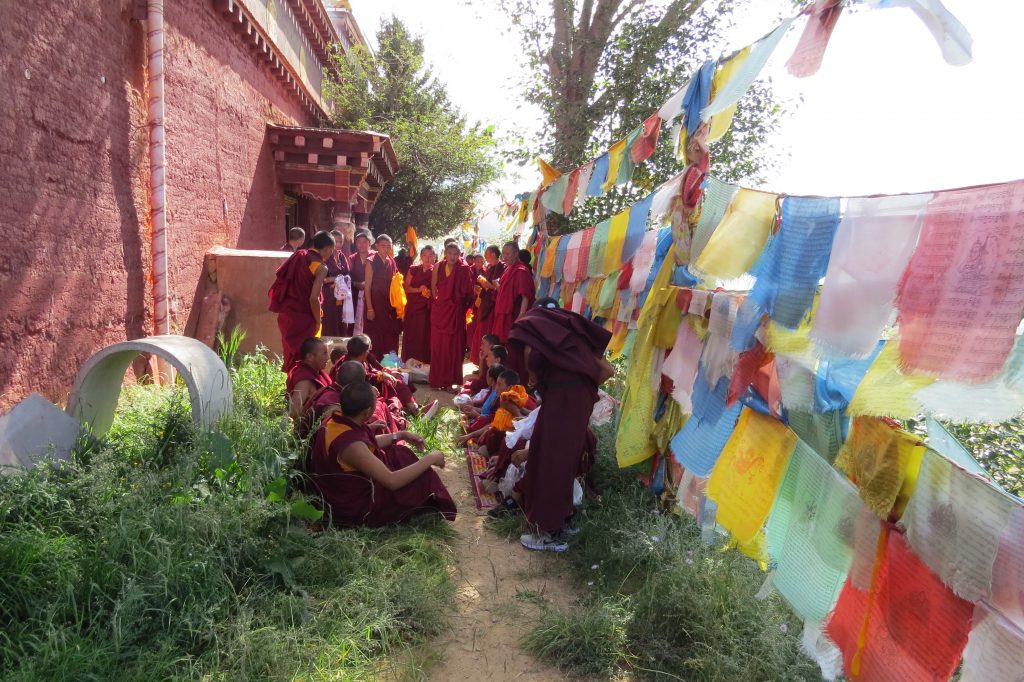
My friend Peggy and I as westerners are given the small house of the retreat master to rest in and pass the waiting hours. Eventually, we start to wander the surrounding hills, among the horses and yaks and endless stretches of wild flowers and green grasses and herbs covering the hillsides. The air is thin and the sun hot, climbing is fatiguing, finding a spot with a lovely view I sat and meditated while Peggy, a devoted gardener, took pictures of the flowers and insects here and there.
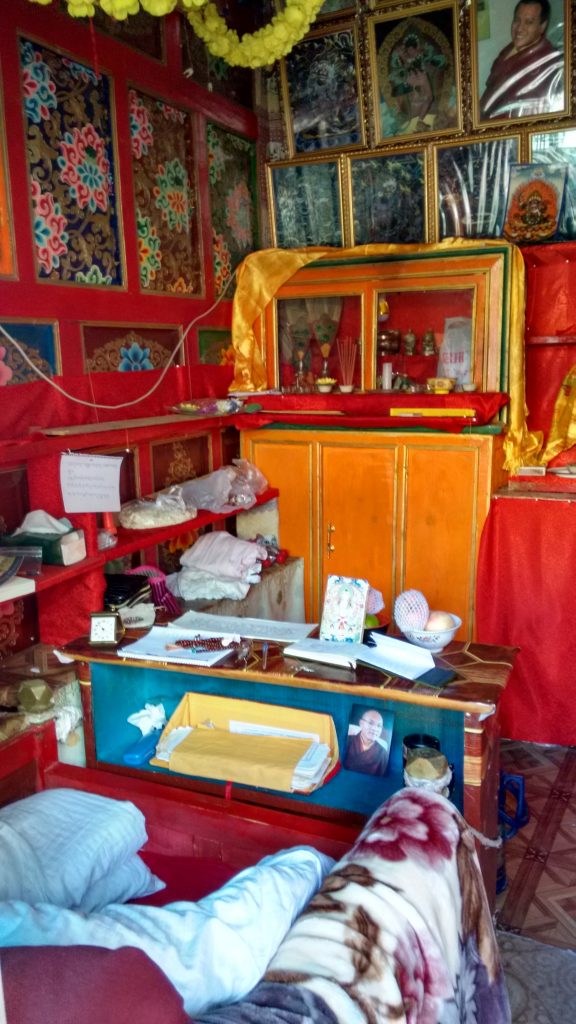
We slowly made our way back to the retreat, to find all the monks had left, we were left alone on this high perch for the rest of the afternoon. In the quiet a fox is spotted coming out from his den, beautiful golden colored, with alert ears, he streaks in and out among the foliage and delights us with this rare sighting. In the quiet buzzing of the sun and cloud and gentle breezes, we see the wide wings of eagles above and then swooping down into the valley below or gliding smoothly on the windstream.
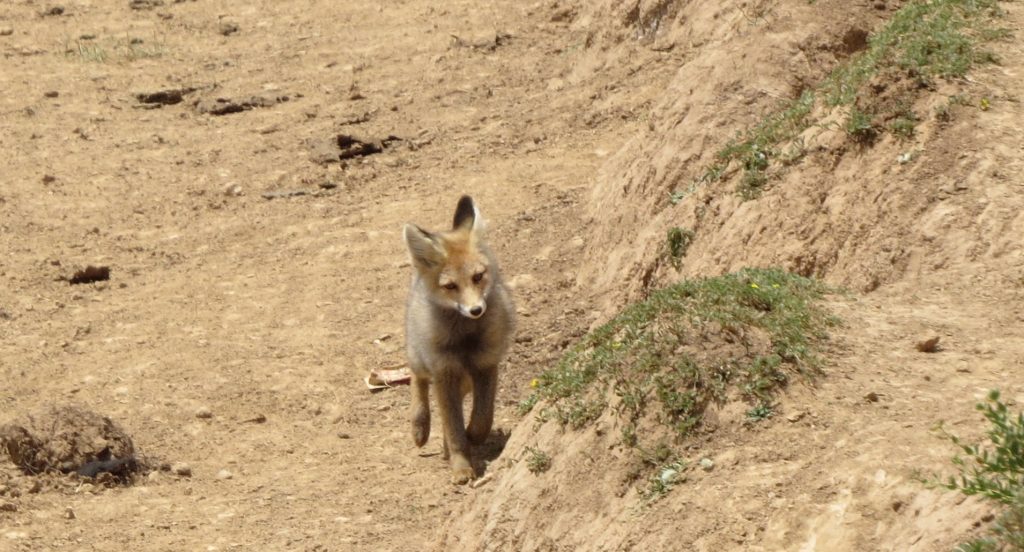
Then just as quickly as they left, the form of a monk is seen coming down the little path, one then more, they are returning to greet Rinpoche as he comes out of the retreat. We wait chatting and laughing on rugs rolled out on the dirt and grass, then as Rinpoche reemerges, jump up and accompany him back to the waiting cars and wind our ways back down the retreat mountain hillside, back to the activities of the monastery.
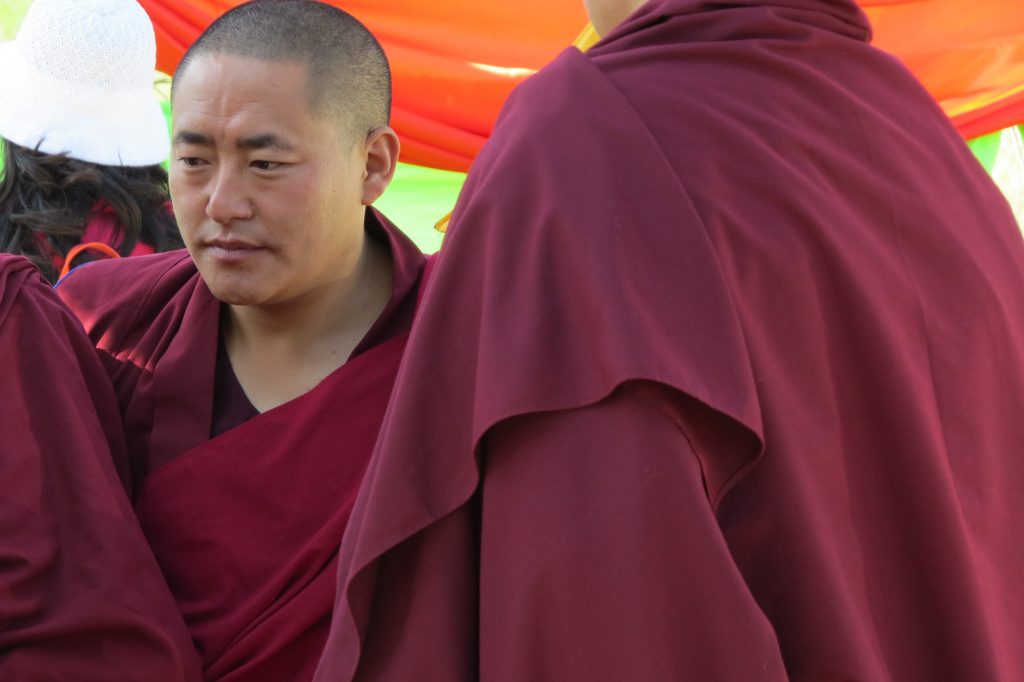
Retreat
At my favorite part of the monastery, the old Mahakala temple, the only part that survived the Chinese occupation without damage as it was used for grain storage, the lower temple is painted with vivid frescos and on the outside porch entrance there is a fresco now faded with the weather, of the local protectors of the valley and monastery. The lower register of the shrine has a series of goddess paintings, unusually lyrical with beautiful faces. For ten days, I went into retreat in the newly renovated upstairs in a large open room smelling of new wood, looking out to the stupas and the glorious view of the valley and mountains
Last days
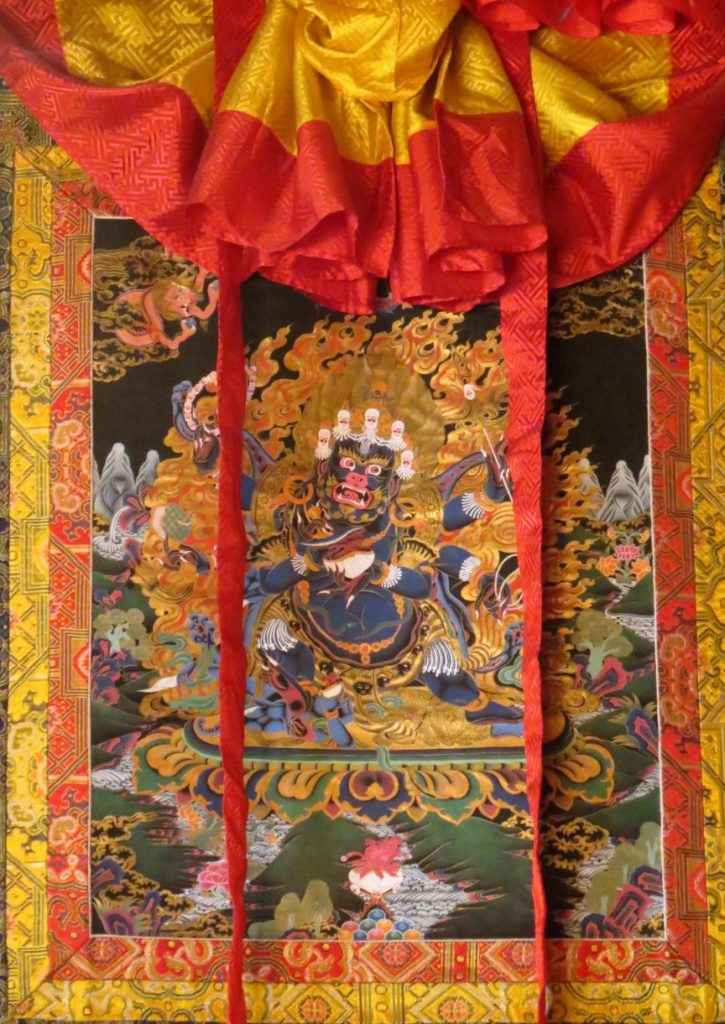
For the last three days of our time in the valley, there was a special three-day ritual of Shadrupa, the main Shangpa Kagyu protector and a central deity practice of Kalu Rinpoche. Every year at new year at Kalu Rinpoche’s Monastery in Sonada India, there was a drupchen or great accomplishment ritual for Gongpo Shadrupa which I joined in several times, so in memory of this and for the sake of the lineage of Shadrupa to remain active and vibrant, Wangchen Rinpoche organized this three-day ritual performance it in Tibet. The temple was filled with the traditional torma, piles of fruit and other foods for the large ganachakra ritual feast and thunderous sound of the wrathful music with the thigh bone trumpets, drums and all the other instruments resonated shaking the floors and walls.
After the last of the protector ritual, at 4 AM in the morning, the car came lunging through the fog to pick us up for the journey back and with only a few hours sleep, in the drizzling rain and darkness, we loaded in our luggage and started down the road towards Chengdu and the long journey through the mountains back to the heat and flat of Chengdu, where we found our first entry back into the world with coffee latte’s and shopping in the Tibet town district and then began the long three-day, three-flight journey home.
Barbara Hazelton is a doctoral student in Buddhist Studies.
